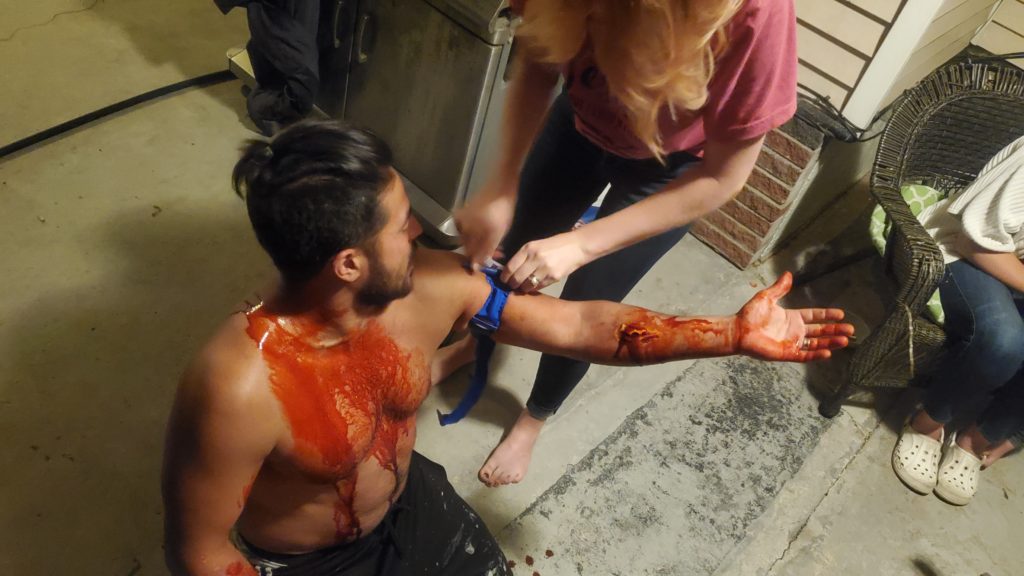A Loose Tourniquet Will Kill You Faster

Knowing how to use the equipment you have available is a key detail for saving lives. If you don’t understand how your gear works and what it’s doing when you deploy it, the effectiveness can be drastically reduced.
This is especially true for tourniquets. It’s not enough to simply buy lifesaving equipment, then never learn how to use it right. I have seen many occasions where a person had a quality TQ like the CAT but didn’t use it correctly.
There is a myth about tourniquets that it should be loosened every so often to allow some blood to flow back into the limb. This, supposedly, is so the limb is getting oxygenated blood to the limb and it will therefore not need to be amputated.
I don’t blame you if this is what you thought. I believe this myth originates from an old technique that came out before doctors knew better.
These days, removing a tourniquet is highly discouraged in all but a few special cases. By loosening a tourniquet, you’re just bleeding the casualty out more gradually. Not only that, but you might flush out any clots forming and prevent the artery from sealing off.
Additionally, tourniquets are not designed to be loosened and tightened over and over again. Each time it’s used, the tourniquet degrades and you risk breaking it altogether and then you’re left with no way to control bleeding.
Many people don’t realize that if they apply a TQ too loose they might be speeding up the casualty’s death.
Arteries are deeper in the tissues and have a higher blood pressure than veins do. This makes it more difficult to stop the bleeding of an artery, but easy to occlude veins. A loose tourniquet reduces the amount of blood being returned to the heart (veins) to be sent back out to keep vital organs, like your brain, alive (arteries).
According to a study I’ve mentioned multiple times on this blog, National Center for Biotechnology Information (NCBI):
“An incorrectly applied tourniquet will actually cause increased bleeding from distal soft tissue injuries and damaged arteries if there is occlusion of the lower pressure venous outflow, but inadequate occlusion of arterial blood flow.”
First Aid for Life, an organization from the United Kingdom also mentions:
“A tourniquet must be put on sufficiently tight to stop the bleeding. If it is not tight enough it can actually end up increasing blood loss.”
And from this article by BC Emergency Health Services:
“A tourniquet applied too loosely, by contrast, may increase bleeding if it occludes venous return without hampering arterial inflow.
There is a real risk of this happening for an inexperienced first responder. Casualties will often complain that the TQ is too tight and ask for it to be loosened. If the first responder complies it can be very detrimental as detailed by the sources I’ve included.
A loose TQ is bad, yes, but so is over tightening.
If the TQ is over tightened it can cause unnecessary damage to the tissues, and might increase the risk of amputation.
A correctly applied TQ can be left in place for up to 2 hours before it starts to become an issue, but a TQ that’s too tight can reduce this time.
So, how tight should a TQ be? Until the bleeding stops. No more, no less.
To do this right you need to watch the injury and turn the windlass until you stop seeing blood pump from the wound. Ensure bleeding has stopped, but avoid putting in a few extra turns just to be safe.
